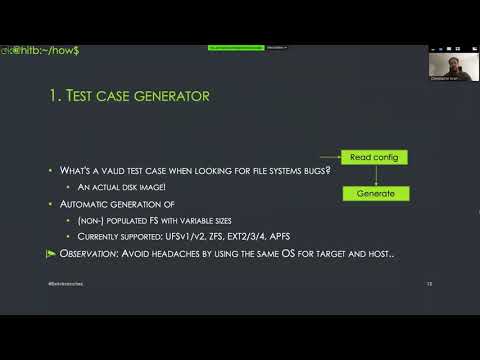Description:
Explore advanced techniques for fuzzing file system implementations to uncover security vulnerabilities in this comprehensive conference talk from the Hack In The Box Security Conference. Delve into the growing field of vulnerability research and fuzz-testing, focusing on file systems as an often overlooked component in both offensive and defensive security. Learn how to develop general guidelines for efficiently approaching this area of research by identifying potential attack surfaces. Gain insights into automating fuzzing processes for kernel file system implementations, with a particular emphasis on BSD-based systems. Discover the speaker's methodology for evaluating the robustness of established and newer file systems, including the use of mutation, metadata analysis, and user emulation. Examine specific case studies involving ZFS, and understand the importance of monitoring, verification, and core feature testing in the fuzzing process. Conclude with a discussion of key findings, their impact on boot times and network domains, and a live demonstration of the techniques presented.
Read more

Fuzzing File System Implementations to Uncover Security Bugs
Add to list
#Conference Talks
#Hack In The Box Security Conference
#Computer Science
#Information Technology
#Data Management
#Metadata
#Programming
#Software Development
#Software Testing
#Fuzzing
#Information Security (InfoSec)
#Cybersecurity
#Attack Surface Analysis
#Vulnerability Research